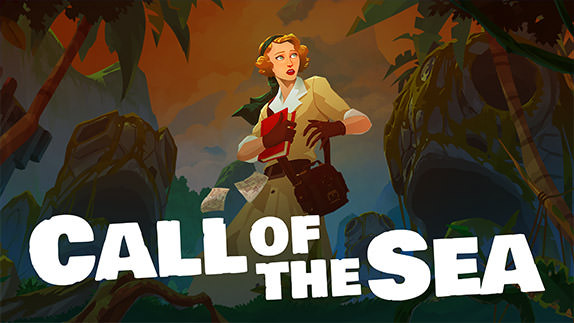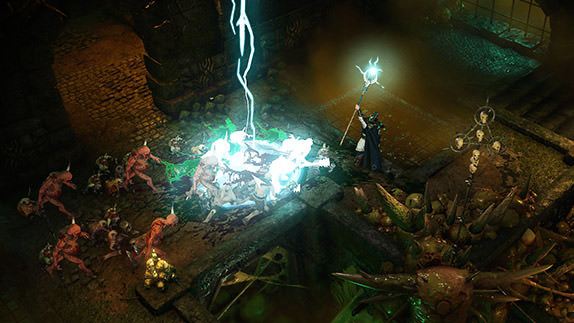Magrunner: Dark Pulse Review

 By Marcus Jones
Posted on June 25, 2013
By Marcus Jones
Posted on June 25, 2013
It’s hard not to bring up first-person puzzle-based games without most gamers (and even many non-gamers) immediately jumping toPortal, singing bits of ‘Still Alive,’ or perhaps making some obscure reference about potatoes. Valve’s wildly successful Portal series was a smash hit that quickly ballooned overnight and created an action-puzzle game that not only combined the first-person shooter and puzzle markets flawlessly, but merged them with a level of humor that many did not expect. From the success of that series, many have tried to emulate Valve’s winning strategy by using similar bits and pieces for their own games in an attempt to ride some coattails. However, Magrunner: Dark Pulse, the new addition to the first-person puzzle market from developer Frogwares and publisher Focus Home Interactive, most certainly does not ride any coattails. Nor does it need to.
Magrunner is very similar to Portal and in all honesty I cannot talk about one without directly mentioning the other. This is not only because there aren’t a ton of noteworthy action-puzzle games to bring up, but also because of the fact that when I was told aboutMagrunner I was given one sentence: “think Portal with Cthulhu.”
And that sold me.
The key success of this new game from Frogwares lies with it being similar enough to Portal to spark an interest in the game, but then it drags players down a much different and disturbing path filled with darkness, horror, and devilishly hard puzzles at times. And it does a damn good job of it.
Set in a stylish, bright and cheerful neo-steampunk future, the world is pushed along to greatness with the help of LifeNET, a website that originated as a social networking giant and quickly blossomed and expanded into a variety of fields. First and foremost is the MagTech Corporation, an offshoot of LifeNET dedicated solely to the use of magnetic technology to power and eventually propel humanity into space. In order to test candidates for the program, MagTech plans to put seven people through a three-month long training course to help them become ‘Magrunners’ and be the ones to bring this tech and humanity to the stars. Dax, an unlikely candidate, manages to be selected through his own brilliance and tossed into the training complex, which quickly becomes a horror-filled breeding ground of grotesque monsters and alien landscapes.
Unlike Portal, Magrunner focuses on magnetic forces that are used to move and propel objects at high speeds or lift Dax into unreachable spots. There are two polarities that can be assigned to objects – Red and Green, which act as the North and South magnetic forces. The same color will draw objects together while the opposite colors will push them apart, which is the complete opposite of how magnets should work. Combining a number of like-polarized items together only serves to increase the overall power of the attraction/repulsion as well, leaving players with the ability to “power up” and truly launch items. Granted, everything must remain within the sphere of magnetic influence, something Dax can see when he wants. It’s really interesting to actually be able to view the spheres of influence the polarities create or the magnetic beams that other devices will cause, allowing players to plan accordingly for the puzzle and utilize the magnetic polarities in a variety of ways, even using them to defend Dax from dangerous creatures.
During the game, it’s quite fun to see the environment go from this beautiful and state-of-the-art science facility that slowly devolves into outdated and disgusting labs and eventually alien worlds. Progressing further and further into the testing chambers, it’s great to see the subtle Lovecraftian horrors influence start to change and morph rooms completely. Don’t forget the monsters too! While they looked a little blocky bobbing around trying to murder Dax, they’re still a treat to see, as the roars sound very ominous coming down the long and empty hallways.
Speaking of the roars, the dialogue within the game is well delivered. Some sounds a little too straight laced at times, but it fits well within the game, as Dax likes to make quips now and again about his situation; it’s a nice change from the standard silent protagonist that many players have become accustomed to in today’s gaming landscape. Adding in short conversations between the different puzzles helps create the atmosphere of the game, building up the mystery of MagTech’s secretive ways and technology.
Simply Put
Magrunner: Dark Pulse is ultimately a fantastic videogame that combines the horror of H.P. Lovecraft with the excellent action-puzzle environment popularized by Portal, wrapped in a dark atmosphere. It’s a great take on the genre and I highly recommend checking it out.
Note: Magrunner: Dark Pulse was reviewed on PC. A digital copy of the game was provided by the publisher/developer.




